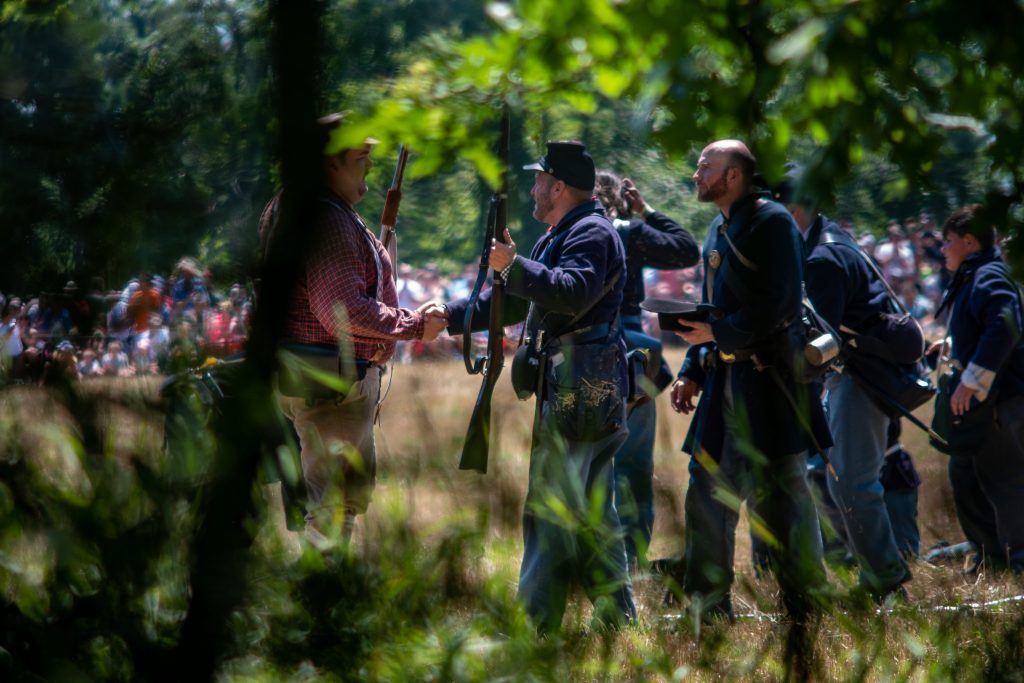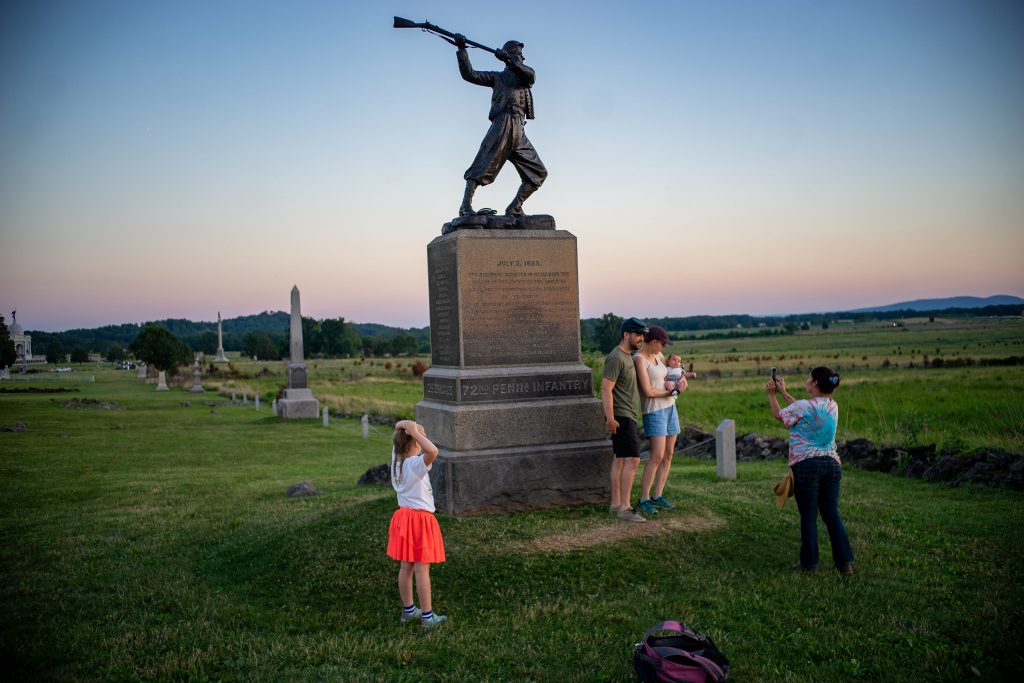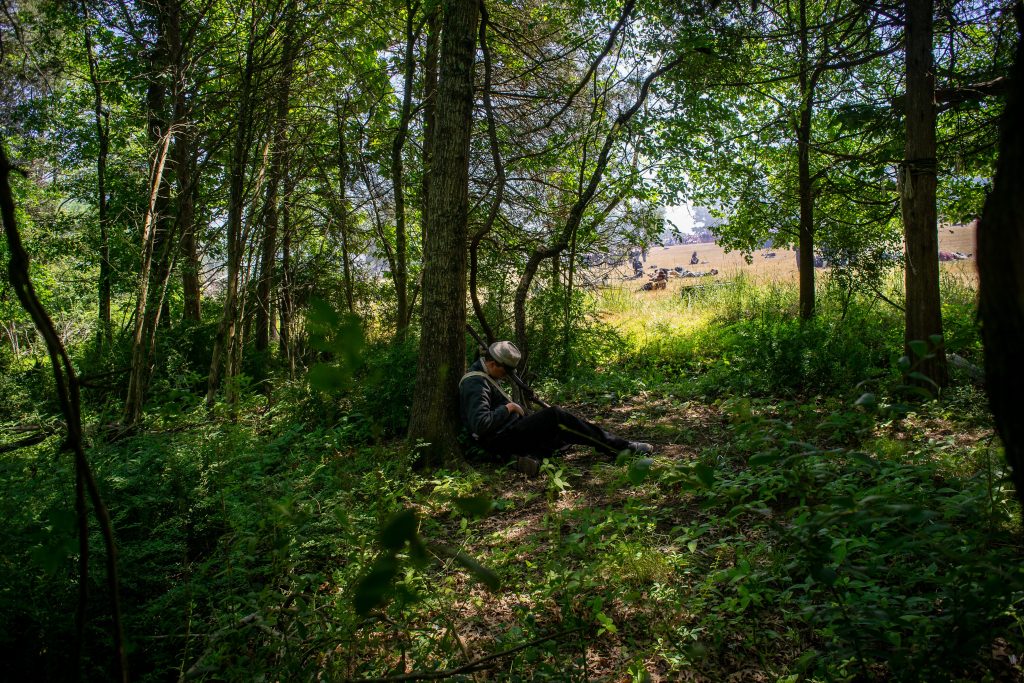At the battle of Gettysburg, Larry Geib was portraying a trooper of the dismounted 2nd Colored Cavalry, a segregated unit of the Union Army that is today played by war reenactors of all races.
"People give you all kinds of excuses of why they are reenactors," said Geib, a retired history teacher, who is white. "But the truth is, where else can a 75-year-old like me run around shooting guns and have people cheering instead of calling the cops?"
Tucked into his leather case were play bullets that he had fashioned out of old maps of the Soviet Union and sticky masses of cream of wheat. "It's a joke, my way of getting back at Russia for invading Ukraine. I shoot the maps at the Confederates," he explained.
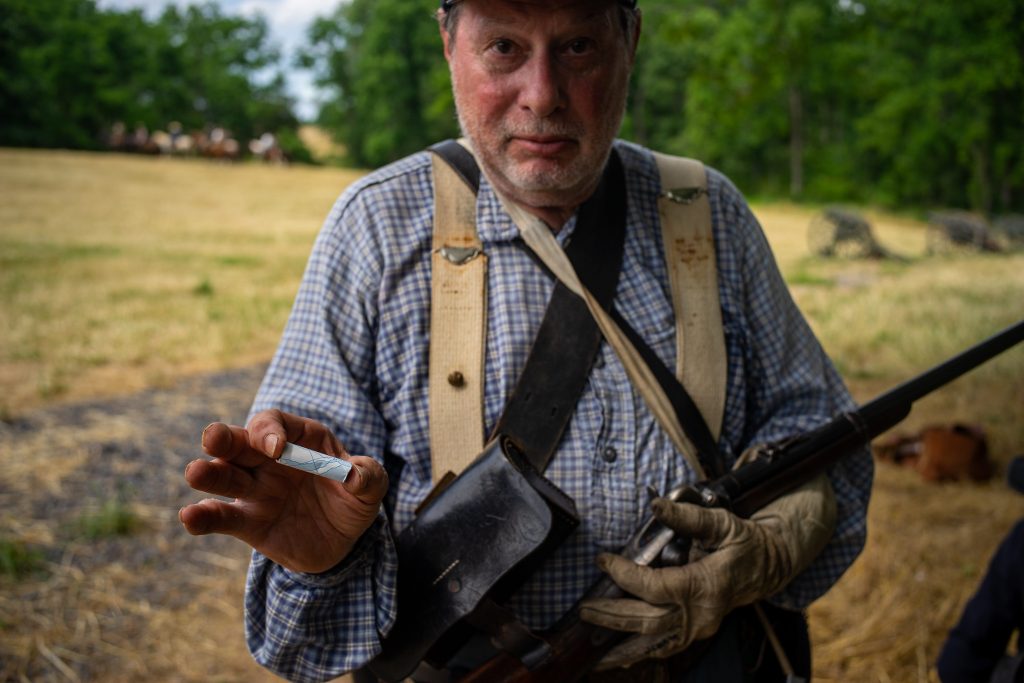
It was the July 4 weekend and, after a hiatus, Civil War reenactors were back for the 159th anniversary of the Battle of Gettysburg. Back in 2020, the annual dramatic reenactment was canceled first because the far right personality Glenn Beck had scheduled a rally in Gettysburg during the same weekend, but then due to Covid. It was held in 2021 but some regulars, expressing misgivings that the event might become overtaken by politics and debates about racial justice, decided to stay away.
The reenactment doesn't actually play out on the historic battlefield because the National Park Service doesn't allow it. Instead, the non-profit Gettysburg Battlefield Preservation Association hosts it at Daniel Lady Farm, which in 1863 was the site of a Confederate headquarters and a field hospital. Starting with the centennial in 1963, and really taking off in the 1980s and 1990s with the popularity of Ken Burns' Civil War documentary series, war reenactors flock to Gettysburg each July, often camping out nearby and displaying varying degrees of faithfulness to period dress, food, and military discipline.
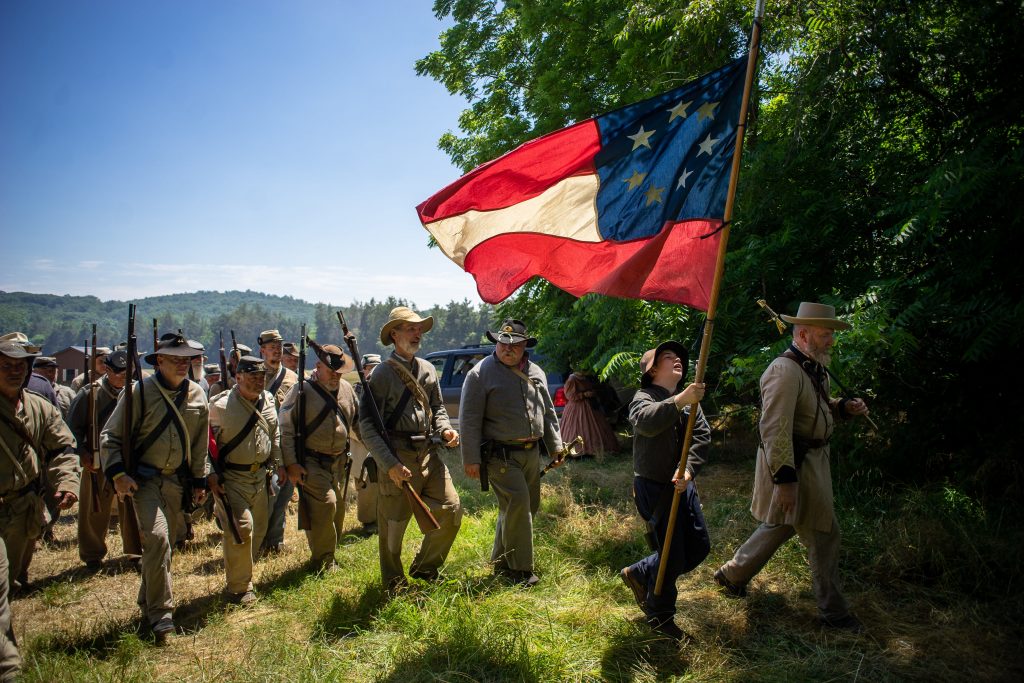
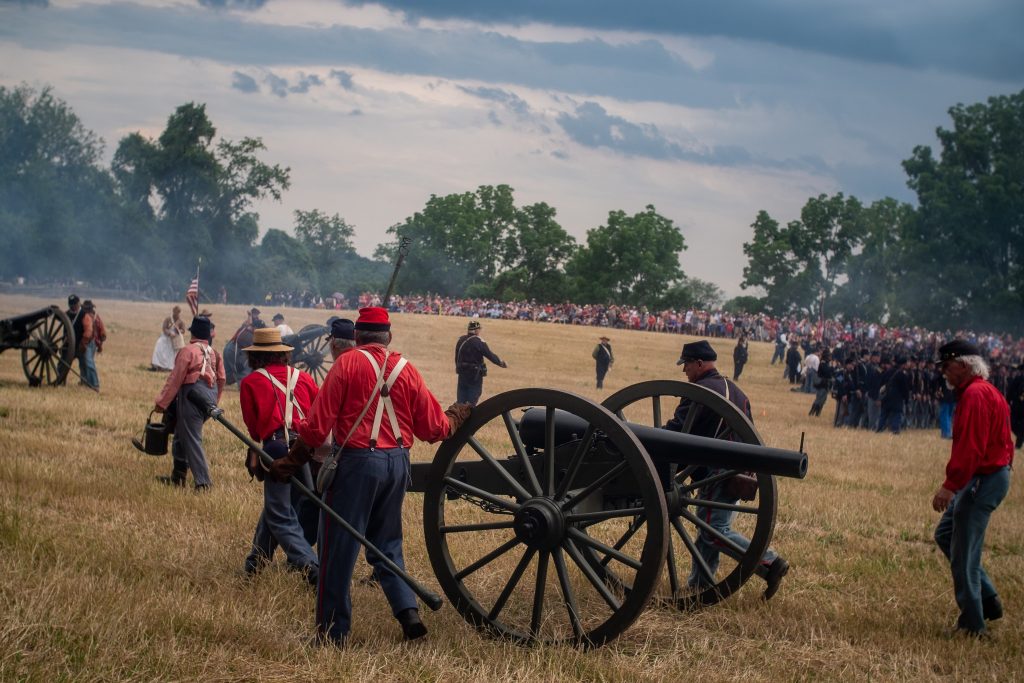
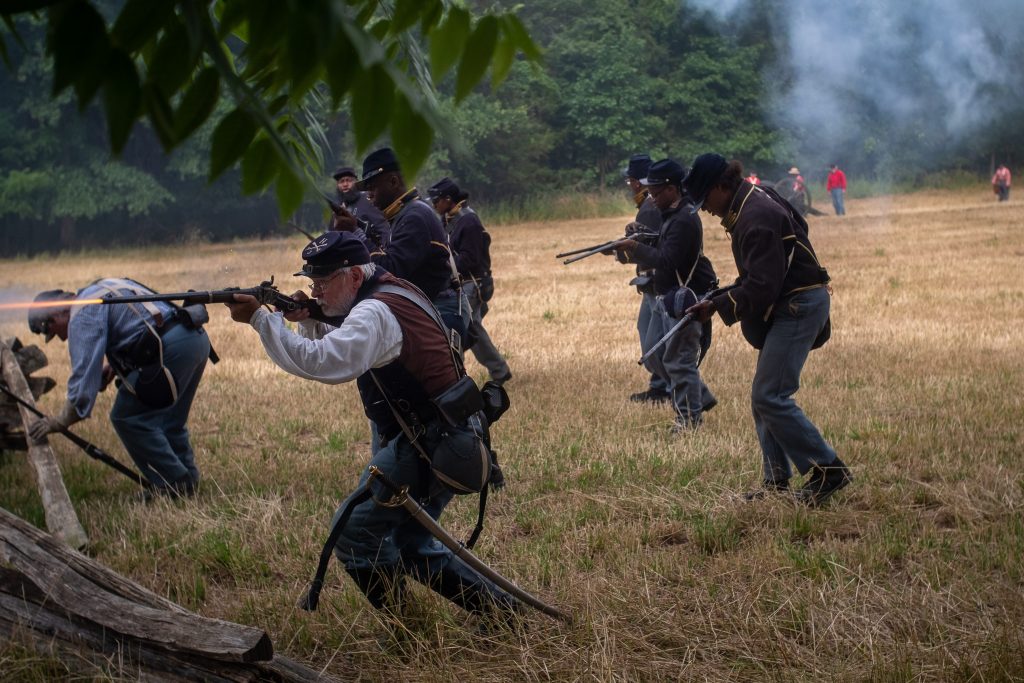
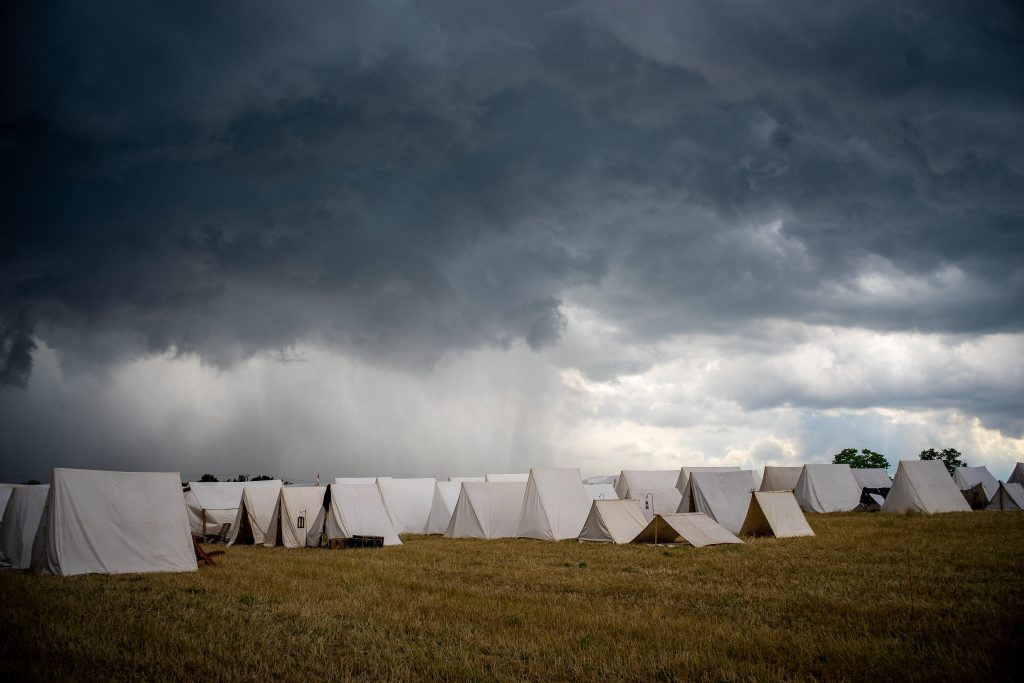
Andrew Bloschak was lying on the ground under the sparse shade of a small copse of trees, behind a section of zig zag worm fencing of the kind you would have seen here in 1863.
"I'm waiting for the Confederates," he said. "They're going to come across the field – from that way – and I'll be ready for them. I'm a sniper."
At his side lay a long rifle that had cost Bloschak, a retired engineer, $1900. A hundred feet away, yellow tape kept several thousand spectators off of the battlefield, and his spot felt surprisingly secluded.
Bloschak has been coming for over 20 years and, in 2002, he switched sides. "I used to be Confederate, but I knew the 2nd Rhode Island guys and we're all friends and used to hang out after battles. But because I was Confederate, they were always shooting at me!" So, he joined them.
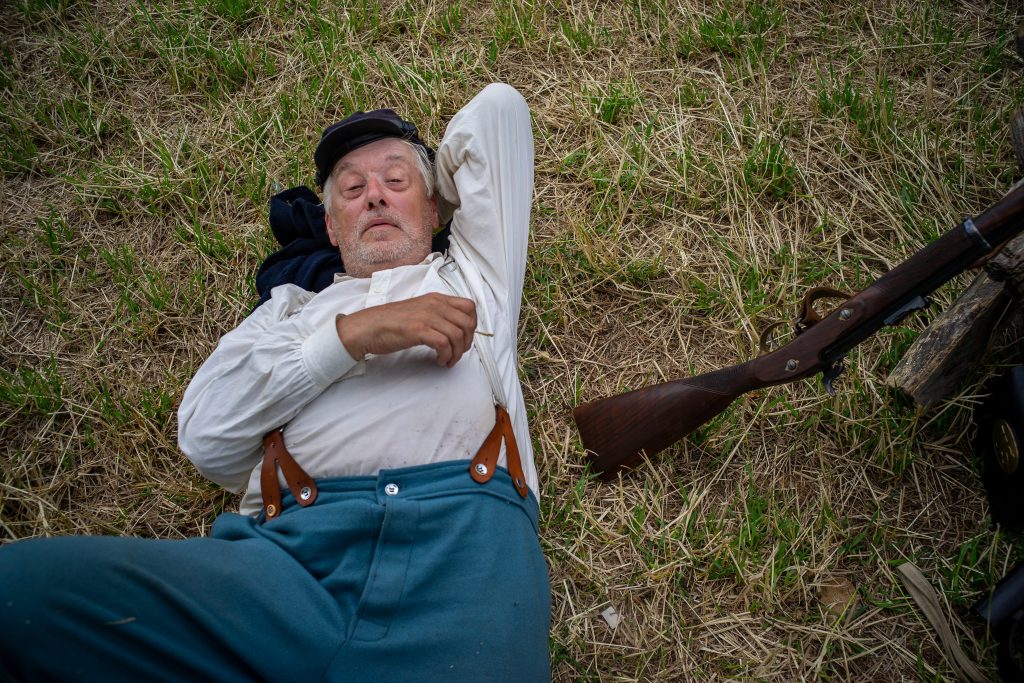
"We were the first company to engage the Confederates at Gettysburg," he said of his unit. "We pushed the Arkansans out of the woods. We did pretty good – we didn't get wiped out."
As we talked about what drew him to the hobby, the conversation shifted from the Civil War to the Second World War, as if playing a role in one gave him a way to vicariously experience something that members of his family had endured. "My father was in a mortar battalion, he was with 18 other guys at the Kasserine Pass in North Africa. One guy lit a match, and all of a sudden, a German shell came in and only my father and one other guy survived. Then he was at the battles of Salerno and Anzio in Italy. And my uncles were in the 3rd Marine Division at Tarawa. They all went through hell."
When we turned to politics and the current moment in America,, Bloschak switched into a stage whisper. "I know it's a bad word," he said, "but I happen to be a Republican. Monuments are history. It's stupid to take them down."
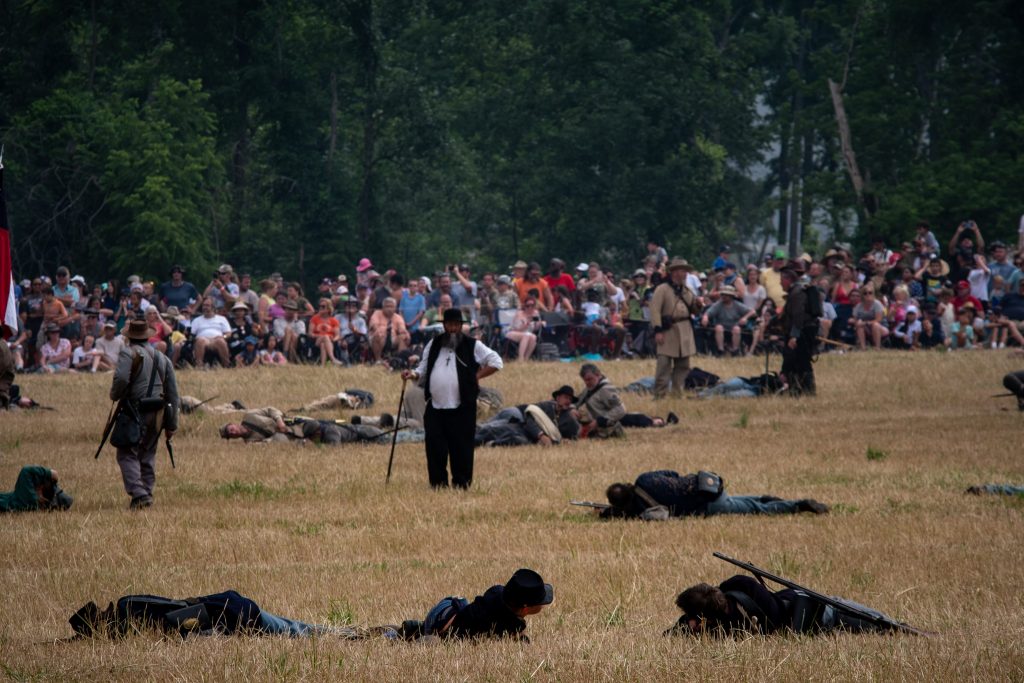
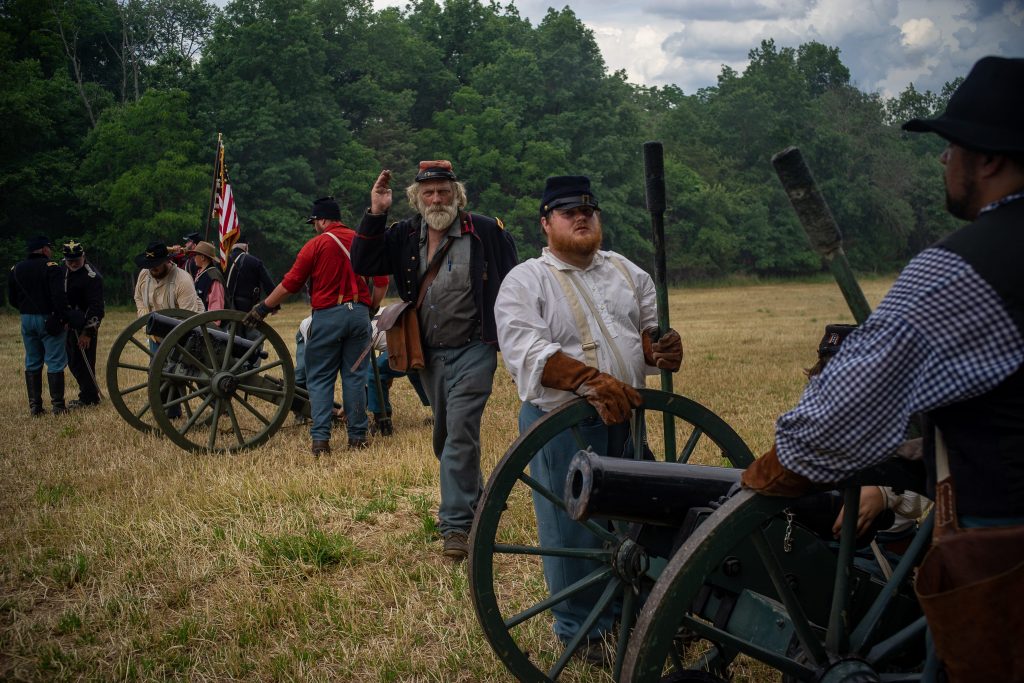
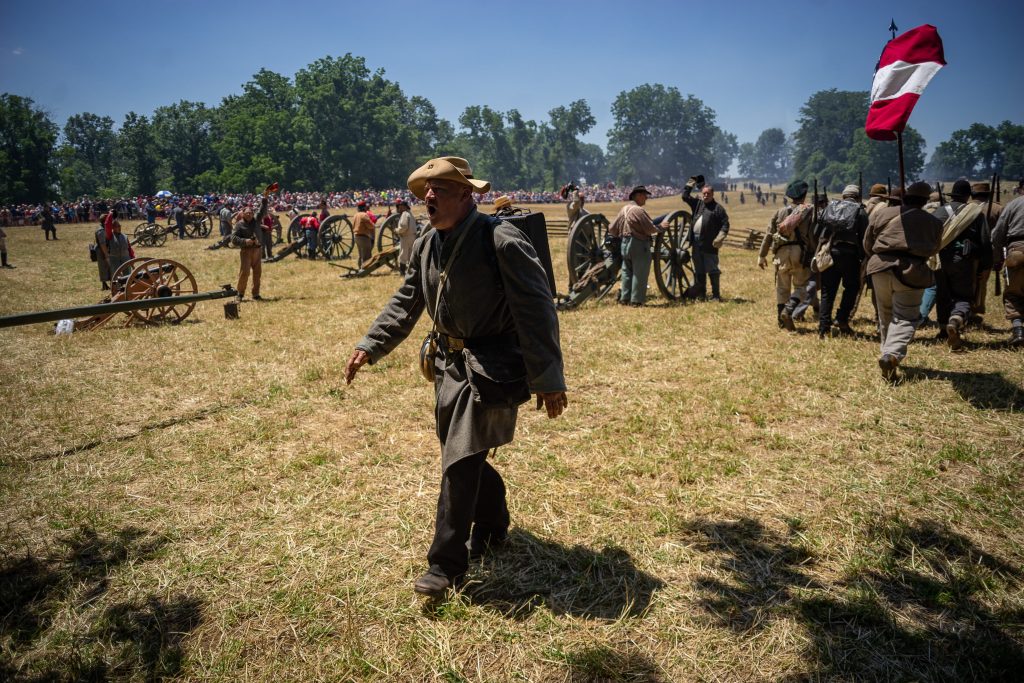
Even before the pandemic, interest in the Gettysburg reenactment was waning. The reenactor who portrayed the 1st Sergeant in Bloschak's unit had a heart attack and died, and they haven't yet found someone to fill those boots. Last year, attendance was as low as some of the reenactors could remember.
"It's dropped hard these last two years. A lot of people dropped out of reenacting after George Floyd, because the persona of the Confederacy became so negative," said Scott Thomas, who was portraying a captain of the 13th Virginia. Unusual for a reenactor, Thomas's day job is serving as an active-duty sergeant major in the US Army. He had come to Pennsylvania from North Carolina with his 16-year old son, Eli.
Fully in the spirit of the event, Eli lay in the field, playing dead, at the end of the mock battle.
"I don't mind getting shot at here, it's a lot easier than in the real world! But seriously, we do it to honor the people who actually fought, and I had family in Mosby's Rangers," Thomas said. "Covid ending, everybody is coming out now."
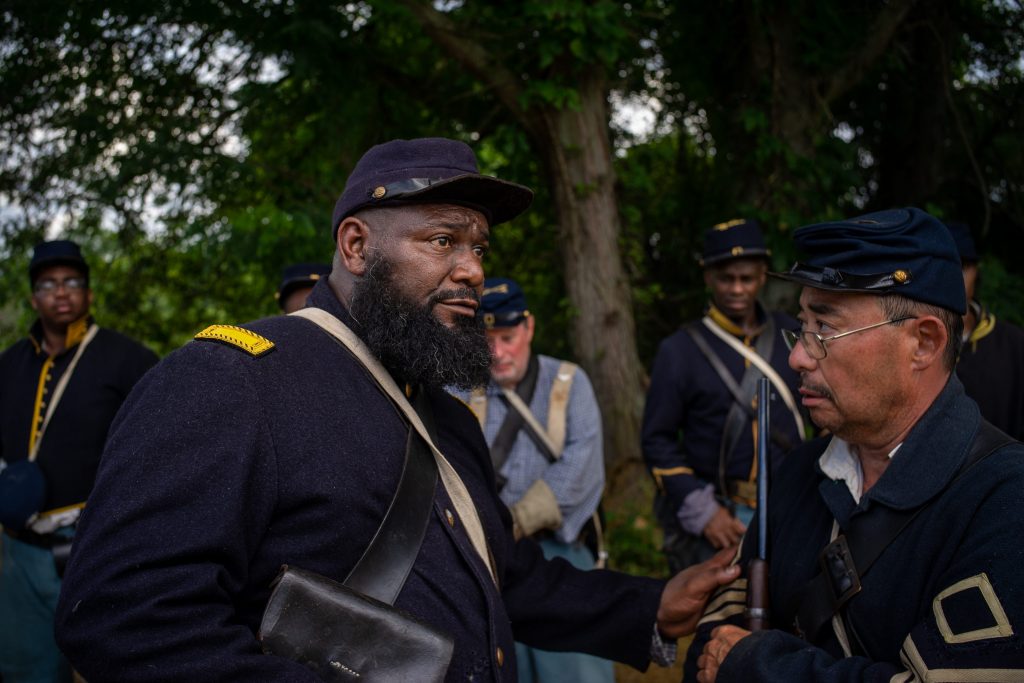
Nathaniel Williams founded the 2nd Colored Cavalry Regiment reenactors group 23 years ago, and they've been coming to Gettysburg almost every year since. The unit is 39 people strong and this year about 20 made the trip. At his side and also in uniform was his daughter, Mone't, who's in her mid-20s. Dressed in uniform and carrying a carbine rifle, she said: "I've been doing this my whole life."
"I see more Blacks attending Gettysburg now than when we first started," said Williams, whose day job is a supervisor for a utility company. "Back in the day, there was racial tension with certain gentlemen, old timers. They never overtly used the n-word but you could sense their attitudes. Maybe we hit the sabers a little harder when we fought in the [reenacted] battles! But reenactment has changed. My heart is not really it, but we did a Confederate role a few years ago, the 1st Cherokee. The Confederate reenactors welcome us now."
The unit they portray wasn't at the Gettysburg battle, but coming here is a way to restore a forgotten or erased history and introduce it to a wider audience. "We didn't fight here, we were in Petersburg, Virginia," he said. "It really doesn't matter though, because, talking to other white regiments' reenactors, they weren't here, either."
Williams said he has ancestors who were part of the United States Colored Troops. "There were over 186,000 Black soldiers in the Federal Army, but that history was not taught properly. When my grandfather showed me [our ancestors'] discharge papers, that opened my eyes.".
"A defeated army should not have statues, except for maybe in museums," Williams said of the debate over Confederate statutes that still swirls in southern states. "You can read about the Confederates in books. They lost. We won."
The 2nd Colored Cavalry Regiment sometimes brings horses from their homes in Virginia, but the complex logistics were too much for them to have horses this year at Gettysburg. Each of them carried replicas of the innovative Sharps cavalry carbines rather than heavier rifles.. Williams said that the horrific slaughter of Civil War battles sometimes saw as many as two-thirds of the cavalry's horses killed, and that surviving riders would have to form "remount companies" attached to regular infantry, fighting on foot. "It was not uncommon to be waiting for a horse," he said.
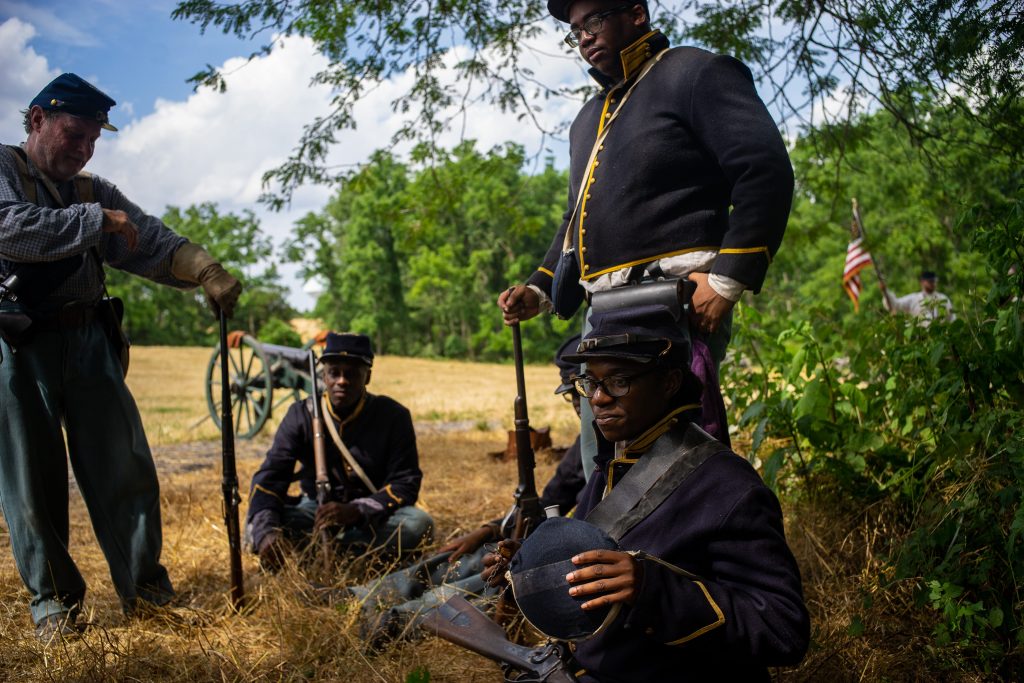
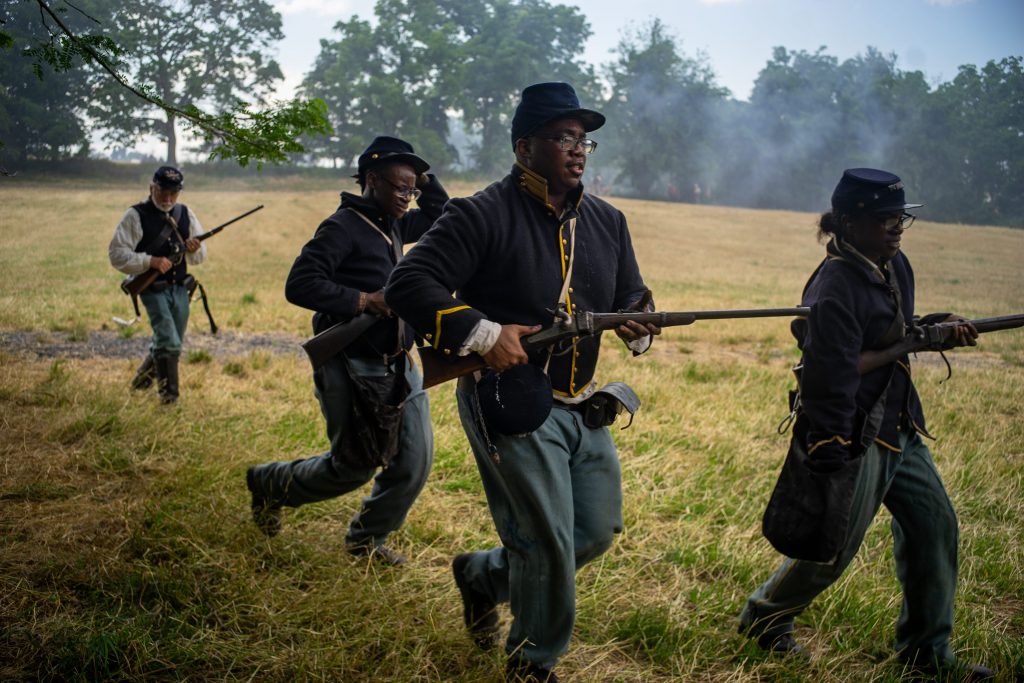
The role that Randall Smith plays is that of a gunner in the 4th US Light Artillery unit and he has a very practical reason for that: "The artillery is cheaper to join for a beginner. You don't need an expensive rifle." The established groups already own the cannons.
Smith, who works with refrigerator compressors in real life, also has a specific family connection to the historical battle. "My great grandfather was wounded in the Peach Orchard," he said, referring to the episode with the heaviest fighting when Confederates overran Union troops and almost turned their flank. He was left for dead on the battlefield for three days." His ancestor had been a soldier in the 141st Pennsylvania Infantry of the Union Army, and couldn't open his mouth properly for the rest of his life, because the bullet shattered his jaw.
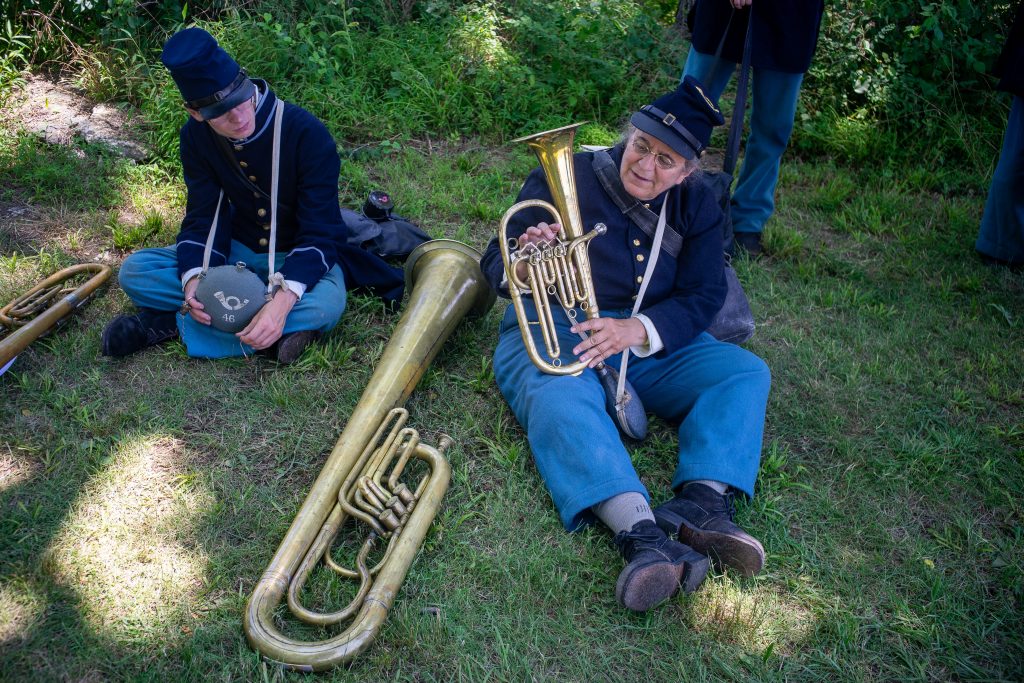
Some reenactors portraying Confederates didn't want to be named, sensitive to concerns about what they see as the real-world threat of gun controls to their activities. "Black powder weapons have no real regulations, but our president gives speeches about gun control," an artillery man said, "he said that you can't own a cannon." He didn't want to reveal, even in general terms, where their cannons are stored. Although it might seem unlikely for current arguments about 21st century assault rifles and high capacity magazines to influence the licensing (or lack of) for single shot firearms and replica cannons that only make noise, their fear is that all guns will be banned without exceptions. But he added with a smile, "we fired more than they told us to."
The guns and cannons used in reenactments are replicas because the originals are too valuable and potentially dangerous to actually fire, even with blanks. Many groups embrace weapons that were rare or unusual at the time. Sometimes that's for practical reasons, because the Williams breech loading gun that this battery wields is lighter, requires a smaller crew to operate, and is much easier to move than a full-size regular cannon. In reality only 40 were made, out of the thousands of heavy guns used by both sides during the war.
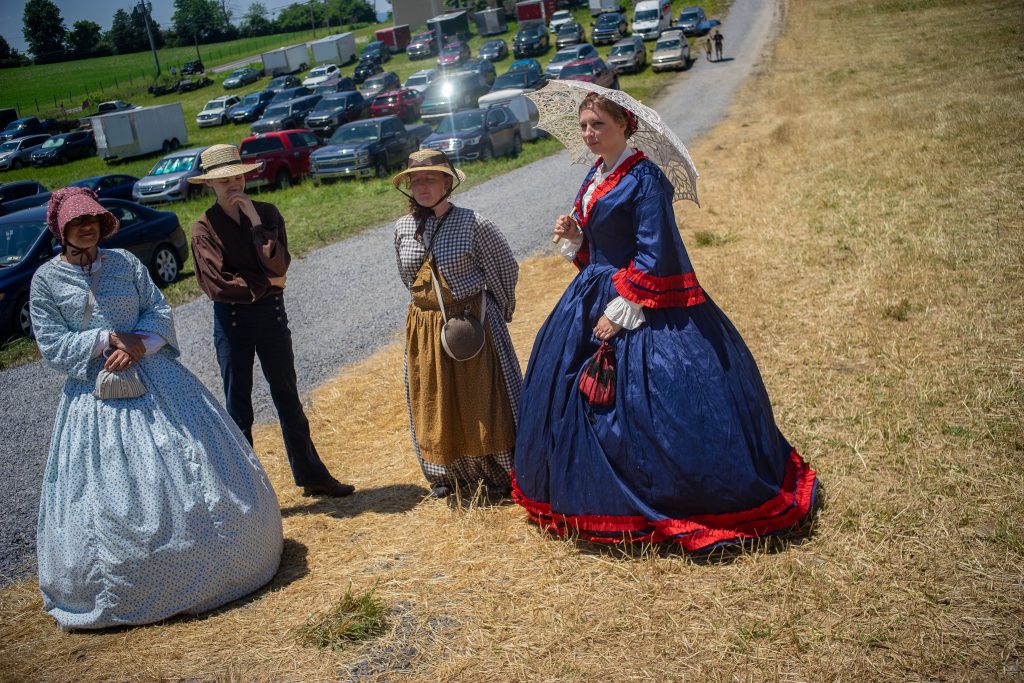
In the town of Gettysburg's Unity Park, a different kind of reenactment was occurring simultaneously. The Confederation of Union Generals, which calls the Civil War the "War of Rebellion" in counterpoint to how generations of Southerners called it the "War of Northern Aggression," wanted to present aspects of the war distinct from shooting and explosions. Its members reenact famous and not-so-famous personages from the era (not just generals) who explain their characters' roles to the public.
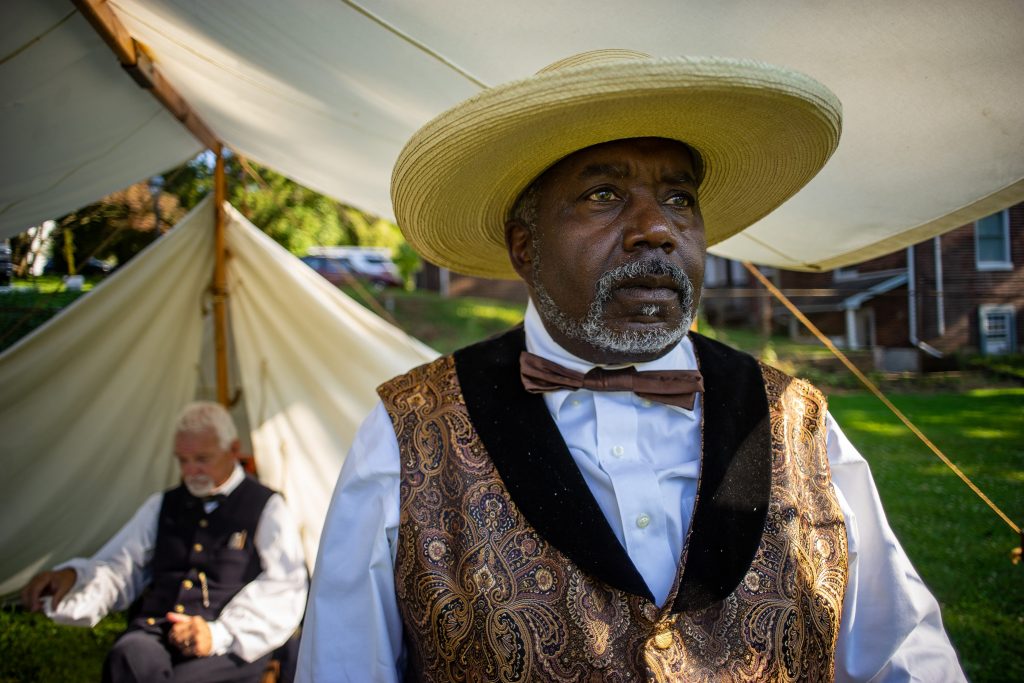
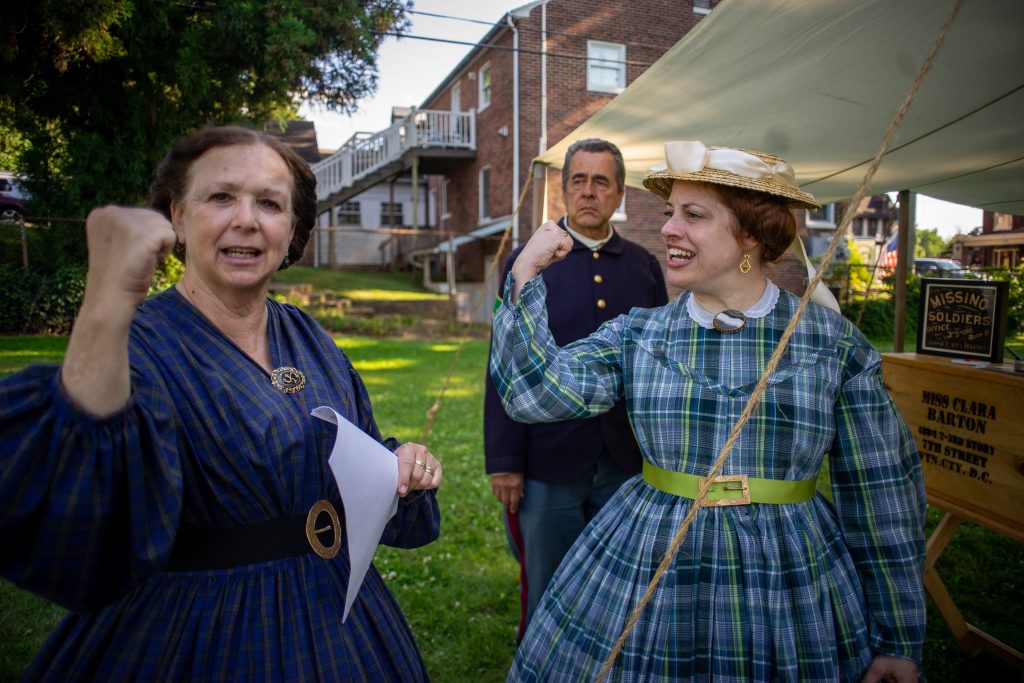
Timothy Hodges, retired from Pennsylvania's Department of Transportation, is proud to play Captain Robert Smalls, the first Black captain of a US Navy ship. "He won freedom for himself and his family by stealing a Confederate ship, because he knew all of the tides, sand bars, channels, and signals in Charleston, South Carolina. You don't know where you're going if you don't know where you come from. I do this so our history is told and not left behind."
Louisa May Alcott and Clara Barton were portrayed by Jennifer Ochman and Carolyn Ivanoff, respectively. They wanted to stress that women played an important role during the Civil War. "Before she wrote Little Women, Alcott was a nurse at the Union Hospital in Washington DC," Ochman said. And Barton was "somebody that should really be remembered," Ivanoff said, "she nursed under fire and was known as the 'Angel of the Battlefield.' She founded the American Red Cross."
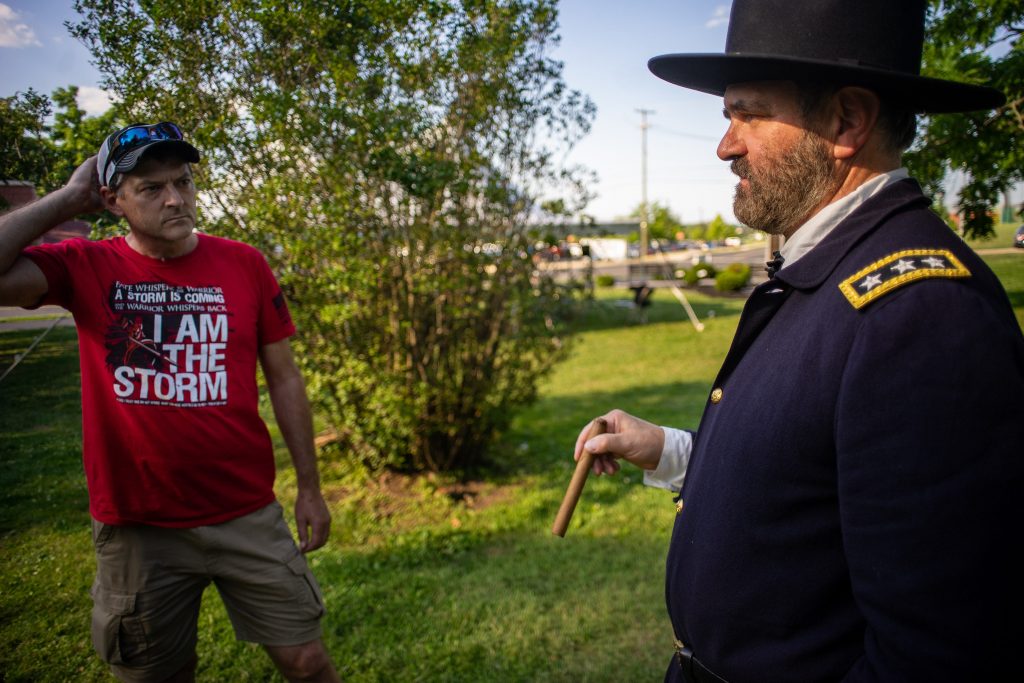
Perhaps the future of Civil War reenacting was most optimistically exemplified by General Ulysses S. Grant's portrayer, solar power developer Erik Curren. He's only been at it for a year and said that he was inspired to do so because "Grant was actually our first civil rights president. He's almost forgotten for that now, that he stood up to the Klan in the South, and sent in Federal troops. I want to bust those myths, that he was ineffective. In his own time, he was one of the three greatest Americans, after Washington and Lincoln."
Back at the Daniel Lady Farm battlefield, high winds and a torrential downpour of rain swept the area on Saturday afternoon, ending the day's "big battle" somewhat prematurely. The reenactors playing dead got up and in what's become a long-standing tradition, the Union and Confederate soldiers shook hands.
Then they ran together to secure their tents that were getting blown over. Spectators ran for the exits to their cars. Five minutes later, the storm ended and the sun was shining again, the humidity and heat barely dissipated, if at all.
